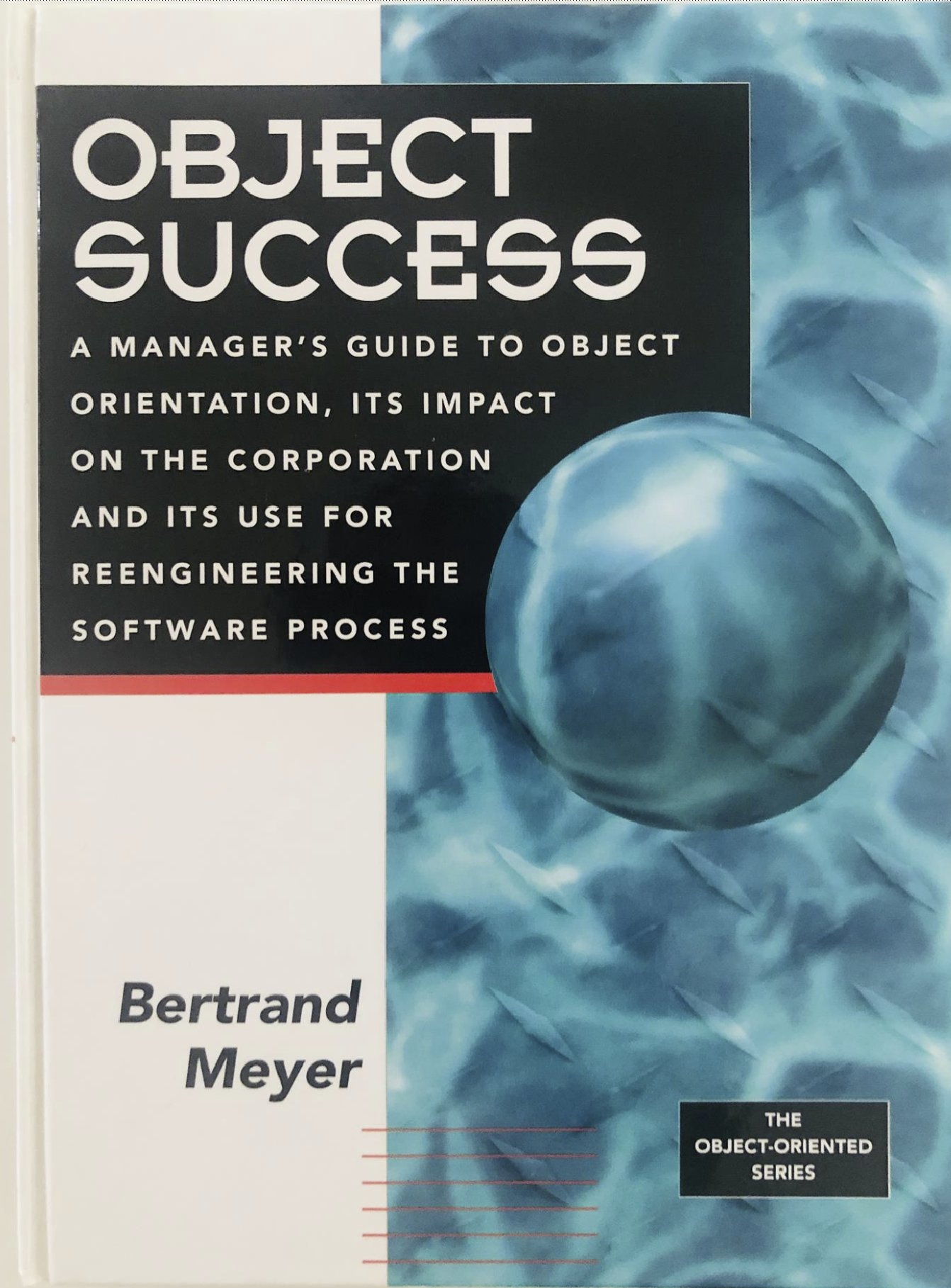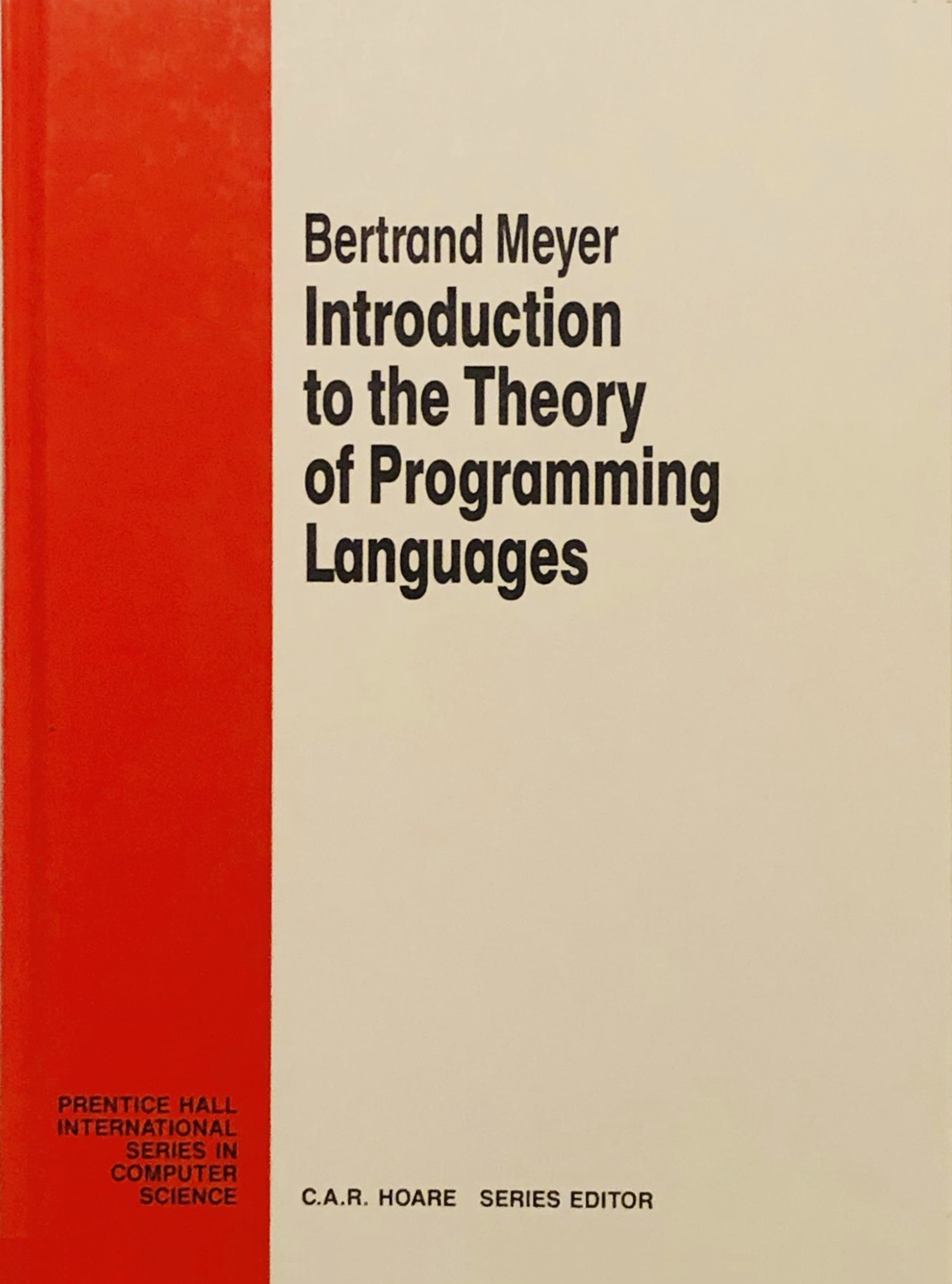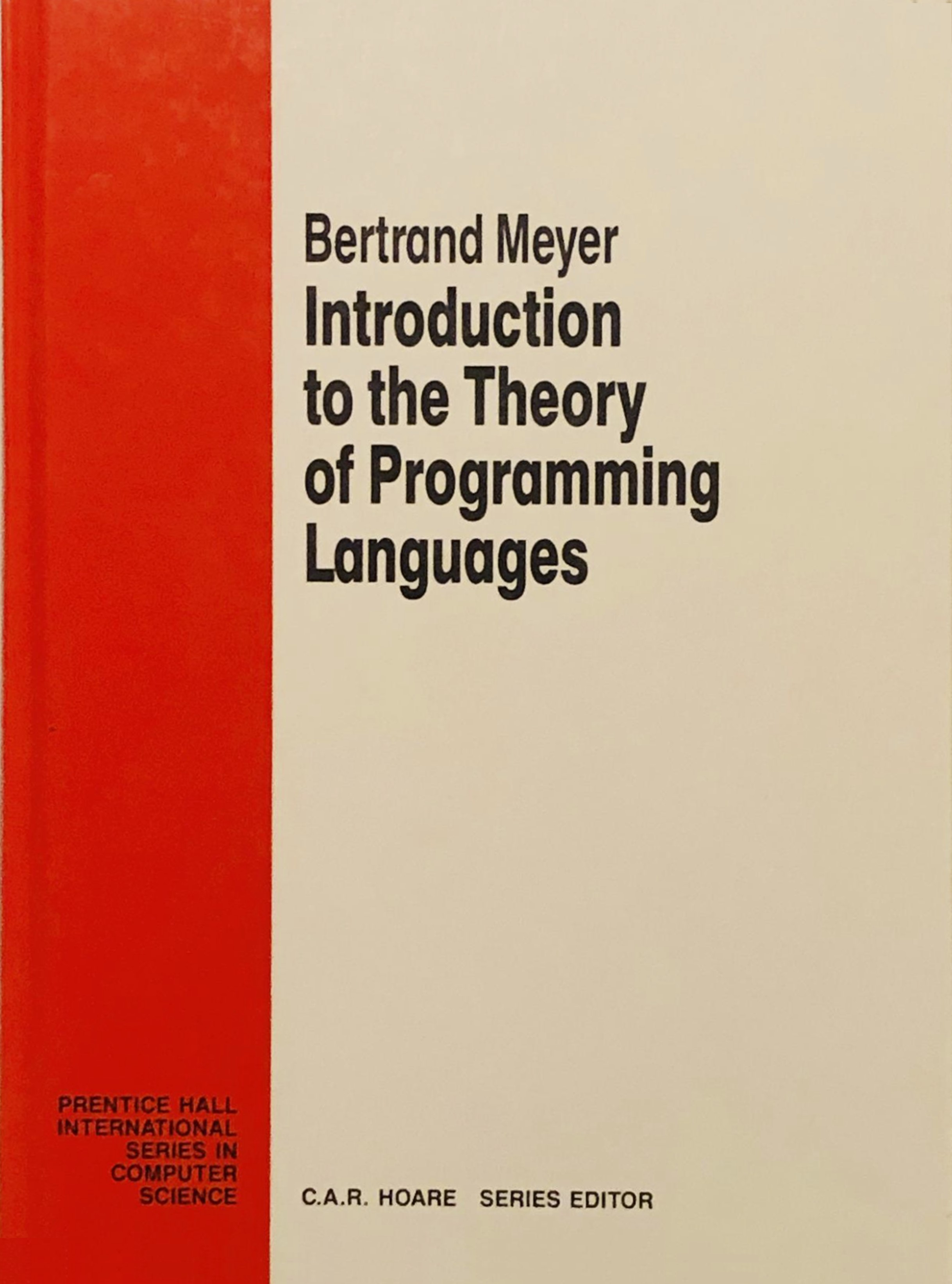Often, “we do this and then we do that” is just a lazy way of stating “to do that, we must have achieved this.” The second form is more general than the first, since there may be many things you can “do” to achieve a certain condition.
The extra generality is welcome for software requirements, which should describe essential properties without over-specifying, in particular without prescribing a specific ordering of operations when it is only one possible sequence among several, thereby restricting the flexibility of designers and implementers.
This matter of logical versus sequential constraints is at the heart of the distinction between scenario-based techniques — use cases, user stories… — and object-oriented requirements. This article analyzes the distinction. It is largely extracted from my recent textbook, the Handbook of Requirements and Business Analysis [1], which contains a more extensive discussion.
1. Scenarios versus OO
Scenario techniques, most significantly use cases and user stories, have become dominant in requirements. They obviously fill a need and are intuitive to many people. As a general requirement technique, however, they lack abstraction. Assessed against object-oriented requirements techniques, they suffer from the same limitations as procedural (pre-OO) techniques against their OO competitors in the area of design and programming. The same arguments that make object technology subsume non-OO approaches in those areas transpose to requirements.
Scenario techniques describe system properties in terms of a particular sequence of interactions with the system. A staple example of a use case is ordering a product through an e-commerce site, going through a number of steps. In contrast, an OO specification presents a certain number of abstractions and operations on them, chracterized by their logical properties. This description may sound vague, so we move right away to examples.
2. Oh no, not stacks again
Yes, stacks. This example is rather computer-sciency so it is not meant to convince anyone but just to explain the ideas. (An example more similar to what we deal with in the requirements of industry projects is coming next.)
A stack is a LIFO (Last-In, First-Out) structure. You insert and remove elements at the same end.

Think of a stack of plates, where you can deposit one plate at a time, at the top, and retrieve one plate at a time, also at the top. We may call the two operations put and remove. Both are commands (often known under the alternative names push and pop). We will also use an integer query count giving the number of elements.
Assume we wanted to specify the behavior of a stack through use cases. Possible use cases (all starting with an empty stack) are:
/1/
put
put ; put
put ; put ; put — etc.: any number of successive put (our stacks are not bounded)
put ; remove
put ; put ; remove
put ; put ; remove ; remove
put ; put ; remove ; remove ; put ; remove
We should also find a way to specify that the system does not support such use cases as
/2/
remove ; put
or even just
/3/
remove
We could keep writing such use cases forever — some expressing normal sequences of operations, others describing erroneous cases — without capturing the fundamental rule that at any stage, the number of put so far has to be no less than the number of remove.
A simple way to capture this basic requirement is through logical constraints, also known as contracts, relying on assertions: preconditions which state the conditions under which an operation is permitted, and postconditions which describe properties of its outcome. In the example we can state that:
- put has no precondition, and the postcondition
count = old count + 1
using the old notation to refer to the value of an expression before the operation (here, the postcondition states that put increases count by one).
- remove has the precondition
count > 0
and the postcondition
count = old count – 1
since it is not possible to remove an element from an empty stack. More generally the LIFO discipline implies that we cannot remove more than we have put.(Such illegal usage sequences are sometimes called “misuse cases.”)
(There are other properties, but the ones just given suffice for this discussion.)
The specification states what can be done with stacks (and what cannot) at a sufficiently high level of abstraction to capture all possible use cases. It enables us to keep track of the value of count in the successive steps of a use case; it tells us for example that all the use cases under /1/ above observe the constraints: with count starting at 0, taking into account the postconditions of put and remove, the precondition of every operation will be satisfied prior to all of its calls. For /2/ and /3/ that is not the case, so we know that these use cases are incorrect.
Although this example covers a data structure, not requirements in the general sense, it illustrates how logical constraints are more general than scenarios:
- Use cases, user stories and other forms of scenario only describe specific instances of behavior.
- An OO model with contracts yields a more abstract specification, to which individual scenarios can be shown to conform, or not.
3. Avoiding premature ordering decisions
As the stack example illustrates, object-oriented specifications stay away from premature time-order decisions by focusing on object types (classes) and their operations (queries and commands), without making an early commitment to the order of executing these operations.
In the book, I use in several places a use-case example from one of the best books about use cases (along with Ivar Jacobson’s original one of course): Alistair Cockburn’s Writing Effective Use Cases (Pearson Education, 2001). A simplified form of the example is:
1. A reporting party who is aware of the event registers a loss to the insurance company.
2. A clerk receives and assigns claim to a claims agent.
3. The assigned claims adjuster:
3.1 Conducts an investigation.
3.2 Evaluates damages.
3.3 Sets reserves.
3.4 Negotiates the claim.
3.5 Resolves the claim and closes it.
(A reserve in the insurance business is an amount that an insurer, when receiving a claim, sets aside as to cover the financial liability that may result from the claim.)
As a specification, this scenario is trying to express useful things; for example, you must set reserves before starting to negotiate the claim. But it expresses them in the form of a strict sequence of operations, a temporal constraint which does not cover the wide range of legitimate scenarios. As in the stack example, describing a few such scenarios is helpful as part of requirements elicitation, but to specify the resulting requirements it is more effective to state the logical constraints.
Here is a sketch (in Eiffel) of how a class INSURANCE_CLAIM could specify them in the form of contracts. Note the use of require to introduce a precondition and ensure for postconditions.
class INSURANCE_CLAIM feature
— Boolean queries (all with default value False):
is_investigated, is_evaluated, is_reserved,is_agreed,is_imposed, is_resolved:
BOOLEAN
investigate
— Conduct investigation on validity of claim. Set is_investigated.
deferred
ensure
is_investigated
end
evaluate
— Assess monetary amount of damages.
require
is_investigated
deferred
ensure
is_evaluated
— Note: is_investigated still holds (see the invariant at the end of the class text).
end
set_reserve
— Assess monetary amount of damages. Set is_reserved.
require
is_investigated
— Note: we do not require is_evaluated.
deferred
ensure
is_reserved
end
negotiate
— Assess monetary amount of damages. Set is_agreed only if negotiation
— leads to an agreement with the claim originator.
require
is_reserved
is_evaluated
deferred
ensure
is_reserved
— See the invariant for is_evaluated and is_investigated.
end
impose (amount: INTEGER)
— Determine amount of claim if negotiation fails. Set is_imposed.
require
not is_agreed
is_reserved
deferred
ensure
is_imposed
end
resolve
— Finalize handling of claim. Set is_resolved.
require
is_agreed or is_imposed
deferred
ensure
is_resolved
end
invariant — “⇒” is logical implication.
is_evaluated ⇒ is_investigated
is_reserved ⇒ is_evaluated
is_resolved ⇒ is_agreed or is_imposed
is_agreed ⇒ is_evaluated
is_imposed ⇒ is_evaluated
is_imposed ⇒ not is_agreed
— Hence, by laws of logic, is_agreed ⇒ not is_imposed
end
Notice the interplay between the preconditions, postconditions and class invariant, and the various boolean-valued queries they involve (is_investigated, is_evaluated, is_reserved…). You can specify a strict order of operations o1, o2 …, as in a use case, by having a sequence of assertions pi such that operation oi has the contract clauses require pi and ensure pi+1; but assertions also enable you to specify a much broader range of allowable orderings as all acceptable.
The class specification as given is only a first cut and leaves many aspects untouched. It will be important in practice, for example, to include a query payment describing the amount to be paid for the claim; then impose has the postcondition payment = amount, and negotiate sets a certain amount for payment.
Even in this simplified form, the specification includes a few concepts that the original use case left unspecified, in particular the notion of imposing a payment (through the command impose) if negotiation fails. Using a logical style typically uncovers such important questions and provides a framework for answering them, helping to achieve one of the principal goals of requirements engineering.
4. Logical constraints are more general than sequential orderings
The specific sequence of actions described in the original use case (“main success scenario”) is compatible with the logical constraints: you can check that in the sequence
investigate
evaluate
set_reserve
negotiate
resolve
the postcondition of each step implies the precondition of the next one (the first has no precondition). In other words, the temporal specification satisfies the logical one. But you can also see that prescribing this order is a case of overspecification: other orderings also satisfy the logical specification. It may be possible for example — subject to confirmation by Subject-Matter Experts — to change the order of evaluate and set_reserve, or to perform these two operations in parallel.
The specification does cover the fundamental sequencing constraints; for example, the pre- and postcondition combinations imply that investigation must come before evaluation and resolution must be preceded by either negotiation or imposition. But they avoid the non-essential constraints which, in the use case, were only an artifact of the sequential style of specification, not a true feature of the problem.
The logical style is also more conducive to conducting a fruitful dialogue with domain experts and stakeholders:
- With a focus on use cases, the typical question from a requirements engineer (business analyst) is “do you do A before doing B?” Often the answer will be contorted, as in “usually yes, but only if C, oh and sometimes we might start with B if D holds, or we might work on A and B in parallel…“, leading to vagueness and to more complicated requirements specifications.
- With logic-based specifications, the two fundamental question types are: “what conditions do you need before doing B?” and “does doing A ensure condition C?”. They force stakeholders to assess their own practices and specify precisely the relations between operations of interest.
5. What use for scenarios?
Use-cases and more generally scenarios, while more restrictive than logical specifications, remain important as complements to specifications. They serve as both input and output to more abstract requirements specifications (such as OO specifications with contracts):
- As input to requirements: initially at least, stakeholders and Subject-Matter Experts often find it intuitive to describe typical system interactions, and their own activities, in the form of scenarios. Collecting such scenarios is an invaluable requirements elicitation technique. The requirements engineer must remember that any such scenario is just one example walk through the system, and must abstract from these examples to derive general logical rules.
- As output from requirements: from an OO specification with its contracts, the requirements engineers can produce valid use cases. “Valid” means that the operation at every step satisfies the applicable precondition, as a consequence of the previous steps’ postconditions and of the class invariant. The requirements engineers can then submit these use cases to the SMEs and through them to stakeholders to confirm that they make sense, update the logical conditions if they do not (to rule out bad use cases), and check the results they are expected to produce.
6. Where do scenarios fit?
While many teams will prefer to write scenarios (for the purposes just described) in natural language, it is possible to go one step further and, in an object-oriented approach to requirements, gather scenarios in classes. But that point exceeds the scope of the present sketch. We will limit ourselves here to the core observation: logical constraints subsume sequential specifications; you can deduce the ltter from the former, but not the other way around; and focusing on abstract logical specifications leads to a better understanding of the requirements.
Reference
Bertrand Meyer: Handbook of Requirements and Business Analysis, Springer, 2022. See the book page with sample chapters and further material here.
 (This article was first published on the Communications of the ACM blog.)
(This article was first published on the Communications of the ACM blog.)
VN:F [1.9.10_1130]
Rating: 10.0/10 (3 votes cast)
VN:F [1.9.10_1130]





 The DEVOPS 2019 workshop (6-8 May 2019) follows a first 2018 workshop whose proceedings [1] have just been published in the special LASER-Villebrumier subseries of Springer Lecture notes in Computer Science. It is devoted to software engineering aspects of continuous development and new paradigms of software production and deployment, including but not limited to DevOps.
The DEVOPS 2019 workshop (6-8 May 2019) follows a first 2018 workshop whose proceedings [1] have just been published in the special LASER-Villebrumier subseries of Springer Lecture notes in Computer Science. It is devoted to software engineering aspects of continuous development and new paradigms of software production and deployment, including but not limited to DevOps. Requirements engineering (studying and documenting what a software system should do, independently of how it will do it) took some time to be recognized as a key part of software engineering, since the early focus was, understandably, on programming. It is today a recognized sub-discipline and has benefited in the last decades from many seminal concepts. An early paper of mine, On Formalism in Specifications [1], came at the beginning of this evolution; it made the case for using formal (mathematics-based) approaches. One of the reasons it attracted attention is its analysis of the “seven sins of the specifier”: a list of pitfalls into which authors of specifications and requirements commonly fall.
Requirements engineering (studying and documenting what a software system should do, independently of how it will do it) took some time to be recognized as a key part of software engineering, since the early focus was, understandably, on programming. It is today a recognized sub-discipline and has benefited in the last decades from many seminal concepts. An early paper of mine, On Formalism in Specifications [1], came at the beginning of this evolution; it made the case for using formal (mathematics-based) approaches. One of the reasons it attracted attention is its analysis of the “seven sins of the specifier”: a list of pitfalls into which authors of specifications and requirements commonly fall.

 Informatics Europe
Informatics Europe LASER summer school
LASER summer school Propulsion Academy
Propulsion Academy